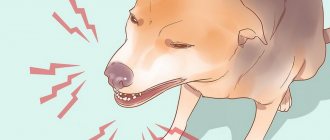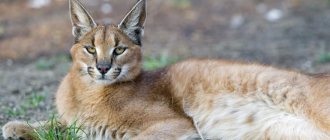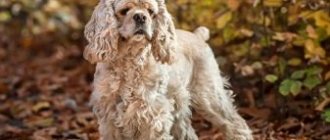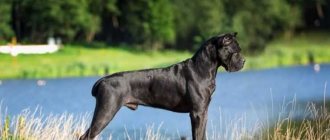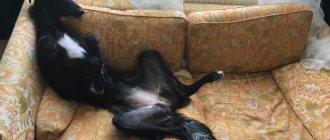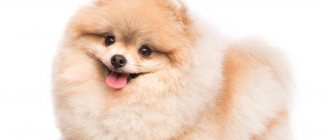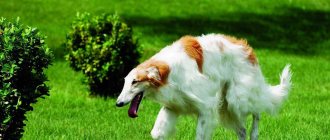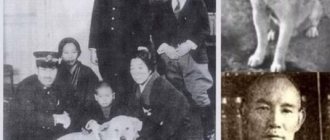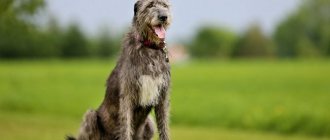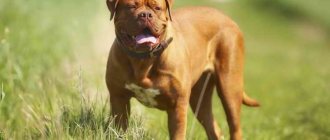This American film appeared on screens in 1989 and over the past decades has practically become a cinema legend. The plot has everything: intrigue, riddles, danger, love. In “Turner & Hooch” it is pleasant to look at the acting of the actors: Tom Hanks, Mary Megan Winningham and others. But the dog’s appearance, which was very original for those times, betrays the special charm and charm of film history. So the audience, watching the adventures of Hooch and Turner, tried to figure out the breed of the dog first.
Who is he?
Directors often film various animals, and this technique usually works accurately and flawlessly in an attempt to reach the hearts of sensitive viewers. These could be cats, piglets, horses, poultry. But the audience likes dogs the most. The breed from the movie "Turner and Hooch" is called the Dogue de Bordeaux. Even now it is not often possible to see such dogs on the street; they are considered a rarity. And even more so during the creation of film history, because it was after the release of the film that the breed began to spread among animal lovers on our planet.
In general, the plot turned out to be touching, funny and funny, but also sad at the same time. This is the story of detective Scott Turner, who, while investigating a murder, finds an unexpected friend in the person of a charming, cheerful, but ill-mannered dog named Hooch. The dog turned out to be the only witness to the mysterious murder of its former owner. And police officer Scott has yet to reveal the motives and circumstances of the crime. Beasley, the Dogue de Bordeaux, played the leading role in the film. His relatives owe this charming creature the fact that over the past 40 years, their rare breed has acquired more and more loyal and passionate fans.
How was Turner & Hooch (1989) filmed?
Hooch destroys most of Turner's personal belongings, including his car, but also helps the cop find the criminals and also find love in the person of local veterinarian Emily Carson (Mayor Winningham).
Five people worked on the film's script, including Michael Blodget (Run, 1991) and Oscar nominee Daniel Petrie Jr. (Beverly Hills Cop trilogy). Some felt that the film turned out to be “dark” in comparison with other Disney Pictures productions, and the leading actor, Tom Hanks, called filming the film “exhausting.”
Still from the movie “Turner and Hooch” Photo: kinopoisk.ru
First of all, it turned out that choosing a shaggy partner for Tom Hanks is not so easy. The producers looked through more than 50 purebred dogs, including Rottweilers, Airedales and shepherds, trying to find a decent-sized dog, but not a huge “monster.” As a result, dog trainer and stuntman Clint Rowe advised the filmmakers to pay attention to the Dogue de Bordeaux, of which there were only about 300 in America at that time. Of course, Hooch was played by more than one dog, but the main actor on the set was a one and a half year old Great Dane named Beasley, who had only 5 months to prepare. Beasley had three other backups.
A dog is not a person and cannot “play” affection for its owner. That's why Tom Hanks had to get to know all the dogs in advance, at the preparatory stage, and spend some time with each one so that the dogs could get used to him. It is impossible to work with dogs without preparation, because then the animal will be constantly distracted and look not at its partner in the film, but at the trainer.
Still from the movie “Turner and Hooch” Photo: kinopoisk.ru
However, there is a little trick here that the filmmakers used. Trainer Clint Rowe taught the dogs to respond to a “click” (click), and the “clicker” itself was handed to Hanks at the time of filming the next take. As soon as he made the right sound, the dog’s attention was focused on the actor, and not on the trainer, although the latter was still always nearby for backup.
And yet, on a couple of occasions, Rowe and Hanks had to suffer. Firstly, the good-natured dog did not want to grab Hanks by the throat, as required by the script. And I didn’t want to drink beer at all. That is, he could open the can easily, but the bitter drink had to be replaced with chicken soup.
The first director of the film was the famous Hollywood actor Henry Winkler, but he lasted in this position for less than two weeks. Winkler told People magazine that he got along well with the dogs, but not so much with the actors. A replacement was found in the person of the Canadian Roger Spottiswoode, who already had several strong genre films under his belt. Spottiswoode, unlike Hanks, during the filming of the film, in his words, “relaxed,” watching the coordinated work of two professionals.
Still from the movie “Turner and Hooch” Photo: kinopoisk.ru
Sometimes there were incidents in this work. Thus, the episode with Hooch’s bathing had to be re-shot more than ten times, because the dog constantly tried to escape from the frame. Hanks recalled that neither he nor the director wanted to achieve the desired effect through editing, although this was the easiest way. They wanted the dog to look natural, but it was difficult to achieve this, so many scenes, not only in the bathroom, had to be either re-shot or “finished” twice, or even three times. That’s why the editing option was rejected, and as a result, the most successful of the filmed episodes ended up in the film.
The Dogue de Bordeaux is a slobbery breed. The sequence in which Turner and Hooch sit in ambush took about an hour to film, during which time Beasley literally drooled, turning the new car seat into something indigestible. In 2001, Hanks was a guest on the show of the legendary Larry King and, in particular, recalled that filming the film “Turner and Hooch” became a real test of strength for him, physically and psychologically:
Still from the movie “Turner and Hooch” Photo: kinopoisk.ru
“Imagine, Hooch and I are sitting in ambush, there are cameras everywhere, on top, on the sides. And I don't have to do anything, just react to the dog's behavior. We didn't try to force the dog to do anything specific, he could just sit and wait, and I had to behave naturally. And it was much harder than speaking a memorized text into the camera.”
Like many films, Turner & Hooch had an alternative ending. Moreover, a test viewing showed that both in the case of Hooch’s death and in the case of his miraculous resurrection, the audience was pleased with the viewing, although in the first case many had wet eyes.
Then-Disney studio chief Jeffrey Katzenberg gave the choice to Spottiswoode. The latter consulted with the scriptwriters and still chose the original version, where the dog dies, but leaves behind offspring. For which, upon returning to England, he was bullied by his friends and neighbors. Subsequently, Hanks took the blame for the death of his partner on camera entirely. And he apologized profusely to the fans of the film.
Still from the movie “Turner and Hooch” Photo: kinopoisk.ru
It is possible that it was word of mouth that did not allow the Turner & Hooch film to become the clear leader at the box office in 1989: not every parent was ready for their child to cry after watching it. However, the film’s collections cannot be called dismal: with a budget of 13 million, it earned more than $71 million in theaters, taking 16th place in the list of the highest-grossing films of the year and beating Konchalovsky’s “Tango and Cash,” James Cameron’s “The Abyss” and the next, fifth , an episode of the Star Trek film series.
Tags: Tom Hanks, filming
Useful materials:
- Dogs of the greyhound breed Russian greyhounds The Russian greyhound is considered the oldest breed with small ears, slightly elongated muscles and arched…
- Herding dog breeds Herding dog breeds Herding dog breeds have helped humans herd herds of goats and sheep since ancient times,…
- Cute Dog Breeds Cute Dog Breeds1. General provisions This personal data processing policy has been drawn up in accordance with the requirements of…
- Toy Terrier Dog Features of Terriers Terriers have traditionally been used as hunting and guard dogs. They are known for their excitement, pursuit and...
A little history
Such dogs appeared in France in the 14th century. But they became especially widespread in the southern regions of this European country, more precisely in the province of Bordeaux, for which they earned their name. In addition, the dogs are commonly called French Mastiffs. Their ancestors can only be approximated. They are considered bulldogs, bullmastiffs and representatives of some other breeds, in particular Tibetan mastiffs. The deeper roots of the Dogue de Bordeaux should be sought among the fighting dogs of the times of the ancient Roman warriors, who knew no pity for the tribes living at that time in the territory of modern France. The aggressors took strong and ferocious dogs with them to battle. They were, it is believed, the ancestors of modern representatives of the described species, who came to this area during the bloody wars centuries ago.
Care
Daily walks in the fresh air, proper and balanced nutrition, and timely vaccination are the key to your pet’s health.
Short hair requires minimal care, no professional grooming, just combing. Although they shed moderately, the large size of the dog makes the shedding noticeable.
Grooming itself is minimal, but taking care of skin and wrinkles is much more important. Owners need to constantly clean wrinkles from accumulated dirt, water and waste, and check the cleanliness of the ears. Moreover, this should be done at least once a day, and preferably after each feeding.
Otherwise, infections and suppuration may develop. Well, you need to accustom your dog to all procedures while he is still a puppy, and not when in front of you is a 50-kilogram dog who does not like to wash himself.
About character
If this backstory is to be believed, the breed of dog in Turner & Hooch is quite serious. And in film footage the animal often looks terrifying. And taking into account the protruding lower jaw and flat muzzle, even more so! Does the warlike appearance correspond to the real characteristics, and can these dogs really be dangerous and aggressive?
People who have had close encounters with this breed and are seriously involved in its breeding assure that external appearances are deceptive. In any case, rumors of ferocity are somewhat exaggerated. In fact, the Dogue de Bordeaux is an adequate creature, with a stable psyche and a calm disposition. But having naturally excellent guard and fighting qualities, dogs undoubtedly know how to stand up for themselves, literally show their teeth and protect their owner. In addition, they are very strong and resilient.
Appearance Features
Dogues de Bordeaux are not built quite proportionately. They have a head that is too large compared to the body, a powerful chest and back, a thick and short tail, set quite low on the croup. The height of males reaches about 68 cm with a weight of 50 kg, females - 65 cm with a weight of 45 kg.
- The head is wide and somewhat angular, has a trapezoidal shape. The forehead is wide, framed by folds of skin, which become mobile when the dog is excited. The jaws are wide, the chin is well defined. The eyes are large, expressive, and oval in shape. The ears droop, but at the moment of excitement they rise up on the cartilage.
- The body is well developed, but at the same time compact. The back is wide and straight. The powerful chest has a rounded shape. The abdomen is moderately tucked. The tail is strong and slightly thickened at the base.
- Limbs – paws are strong with strong bones. The fingers are pressed tightly together, the powerful claws have a rounded shape. The front legs are shorter than the hind legs. Due to this, at the moment of movement, the animal’s steps are soft and sweeping.
The Dogue de Bordeaux's coat is thick and short, and very soft to the touch. The predominant colors are burgundy-brown, red and golden fawn. White spots may be present on the chest and fingers.
Like representatives of other large breeds, Dogue de Bordeaux often suffer from hip dysplasia. The large head size of puppies often causes difficulties during the birth process.
Funny and touching shots
In cinema, the image of any animal involuntarily becomes idealized. He becomes humanized and absorbs human thoughts, logic and motivation of actions. But the talent of the four-legged actors should undoubtedly be given due credit, as should their efficiency and patience. In the film "Turner and Hooch" the dog breed is also shown from a certain angle, which the writers and directors deliberately chose.
The plot includes many touching scenes. They demonstrate the cutest and most attractive character traits of the creature named Hooch, his sympathy for humans. In life, Dogues de Bordeaux are also distinguished by their endless devotion to their owner and simply love to lick his hands. The film also includes many comic scenes that show in all its glory the not-so-pleasant physiological aspects of the breed. To do this, during filming, an impressive amount of special foam was used to simulate dog saliva.
Health
Unfortunately, Dogues de Bordeaux are not known for their good health. The life expectancy of large breeds is already short, and in their case it is depressingly short.
According to the American club “Dogue De Bordeaux Society of America”, their average life expectancy is 5-6 years. Data from UK veterinarians cite similar figures; a registered long-liver lived up to 12 years, and dogs living over 7 years are rare.
According to statistics, the cause of death in 30% of cases is cancer, in 20% cardiac disease and in 15% volvulus. In addition to the fact that they do not live long, they also suffer at the end of life from problems with the musculoskeletal system and respiratory diseases.
Their cancers are varied, but the most common is lymphoma, which affects the immune system. Moreover, in Dogues de Bordeaux, cancer appears as early as 5 years of age. Treatment and chances of survival vary greatly depending on the type of cancer, but are expensive and difficult in any case.
The brachycephalic structure of the head leads to breathing problems; it is difficult for them to get full lungs of oxygen. As a result, they wheeze, snore, gurgle and suffer from respiratory infections.
During jogging, they quickly become out of breath and cannot reach maximum speed for a long time. In addition, breathing cools the dog's body and in the heat they can die from overheating.
And short hair does not protect them from frost, so it is better to keep them in the house, and not in a booth or enclosure.
Several dogs in one role
Only Bigley is listed in the film's credits. However, in fact, there were several four-legged actors on the set. Later in the interview, Tom Hanks mentioned three dogs, but even he doesn’t know how many there actually were. Of course, in Turner and Hooch the dogs were of the same breed and had sufficient external similarities. Beagley just grimaced exceptionally well on camera, which earned him everyone’s love. But the real hero and performer of many difficult tricks was the dog Igor.
Upon receiving his award at the Academy of Arts, Hanks spoke with gratitude about Hooch and his role in the film. The actor said that during the filming he did not have a clear plan of action, he simply naturally reacted to the peculiar behavior of the talented Bigley. Unfortunately, the dog died soon after. But he taught his viewers a lot, just as the hero of the film story changed the life of policeman Turner, his habits and character, and also helped him meet his love.
Dogue de Bordeaux: description of the breed
The role of Hooch in the film of the same name was played by two dogs of the Dogue de Bordeaux breed - Bisley and Igor. Bisley portrayed touching faces in the frame, Igor performed all the necessary tricks. Both representatives of this breed had one thing in common - they are very affectionate, sociable and devoted to their owners.
In real life, representatives of the dog breed from the movie “Turner and Hooch” look no less presentable. Just look at this photo: a huge head framed by wrinkles with expressive wide-set eyes and a slightly flattened nose, a powerful neck, strong and muscular legs. It seems that before us is a giant, menacing dog who will be an excellent guard, even if he does not utter a single roar.
In fact, all animals of this breed are characterized by a good disposition and unpretentiousness in everyday life. They are excellent companions for both older people and young people leading an active lifestyle. No need to worry if there are children or small animals in the house. Great Danes are very sensitive and reserved towards them.
Dogs are very smart, but due to their innate laziness, they are quite difficult to train. A dog of this breed will happily replace training with passive rest, lying in a comfortable place.
The brothers of the main character of the film about the dog Hooch are endowed with guard qualities. They do their job perfectly, boldly, but at the same time without aggression, protecting the owners of the house from any kind of encroachment. But unlike excitable terriers, who are predisposed to create fear in the area with their barking, Dogues de Bordeaux are not inclined to make unnecessary movements, demonstrating their ferocity only in moments of real danger.
